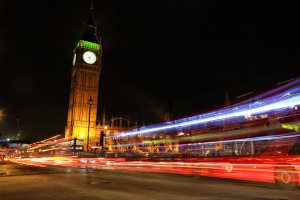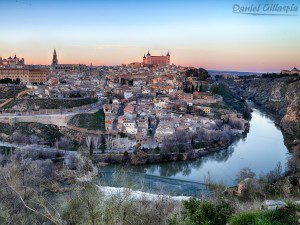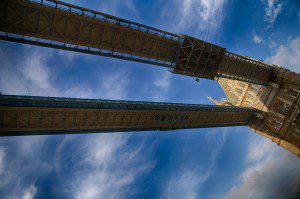
Van Gogh’s Sunflowers: Finding Inspiration at the National Gallery in London
When I’m standing in front of the bright yellow painting of Sunflowers at the National Gallery, among a herd of other tourists jockeying for position in front of me with

When I’m standing in front of the bright yellow painting of Sunflowers at the National Gallery, among a herd of other tourists jockeying for position in front of me with

London is one of the funnest cities to photograph for me. It reminds me of New York City in that it seems like at every corner you come across there’s

From Mirador del Valle, you watch as the sunset casts its orange glow on the Alcázar towering above a maze of cobblestone roads that wind through a hillside covered in

So you’re researching places to and eat in Madrid and looking for a few suggestions? I got you covered. Here are a few places near to Atocha (and one place near

Last weekend Brad and I ventured to one of London’s newest tourist attractions: the glass floor walkway at the Tower Bridge Exhibition. Overall, it was a fun experience and for the

So you’re wondering whether you should take a Taxi, Tube, or other express train to get from Heathrow to central London. Here’s a quick answer to your question: I recommend the

Brad and I recently had some great food on our weekend trip to Amsterdam. While we didn’t really focus on finding any fine Dutch cuisine we did come across some

Brad and I recently took a week-long trip to Iceland in late August 2014. The trip didn’t go as expected to the say the least. We both came down with

The British Museum is often considered one of the top things to do in London. That should come to no surprise as the museum is free to enter and holds

There are actually many “love lock” bridges in Paris, though two of them stand out amongst the rest. The “Pont de l’Archeveche,” is located just next door to the Notre Dame
| Cookie | Duration | Description |
|---|---|---|
| cookielawinfo-checkbox-analytics | 11 months | This cookie is set by GDPR Cookie Consent plugin. The cookie is used to store the user consent for the cookies in the category "Analytics". |
| cookielawinfo-checkbox-functional | 11 months | The cookie is set by GDPR cookie consent to record the user consent for the cookies in the category "Functional". |
| cookielawinfo-checkbox-necessary | 11 months | This cookie is set by GDPR Cookie Consent plugin. The cookies is used to store the user consent for the cookies in the category "Necessary". |
| cookielawinfo-checkbox-others | 11 months | This cookie is set by GDPR Cookie Consent plugin. The cookie is used to store the user consent for the cookies in the category "Other. |
| cookielawinfo-checkbox-performance | 11 months | This cookie is set by GDPR Cookie Consent plugin. The cookie is used to store the user consent for the cookies in the category "Performance". |
| viewed_cookie_policy | 11 months | The cookie is set by the GDPR Cookie Consent plugin and is used to store whether or not user has consented to the use of cookies. It does not store any personal data. |
